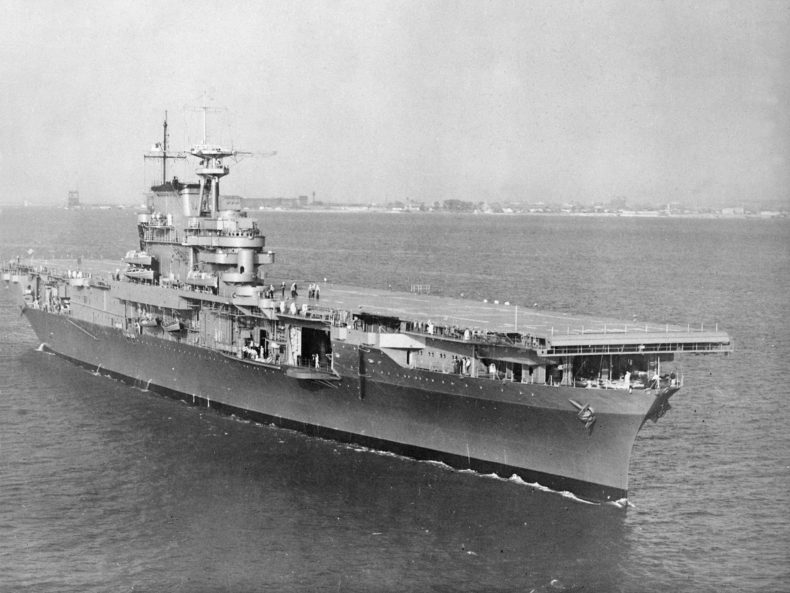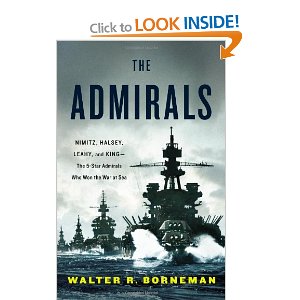The Admirals: Nimitz, Halsey, Leahy, and King – The 5-Star Admirals Who Won the War at Sea

Walter R. Borneman’s The Admirals: Nimitz, Halsey, Leahy, and King is a very ambitious book, trying to squeeze into one volume four different characters, each of whom could easily fill a multi-volume biography themselves. It’s an ambition Borneman succeeds in matching, with the inevitable omissions not detracting too much from the book.

The book tells us of the careers of the only American 5-Star Admirals, all of whom served with great distinction in the Second World War. They are wrapped together into a story that, despite the need to cover four different people, is still cohesive, showing the reader not only how the individuals developed but also how naval technology and tactics evolved during their four careers and how the war in the Pacific was won.
Several of the key battles in the Pacific have generated many books in their own right, and Borneman skilfully balances giving the reader enough of an understanding of the controversies over some of the battles without getting mired too much into the details. Chances are you will be reaching for the internet or the bookshelf to find out more about the particular controversies which most interest you when reading the book – and triggering that level of further interest is a sign of an author succeeding. Borneman’s copious notes and bibliography help with that, with the notes also including some interesting side-stories to the main narrative, such as on the efforts to end segregation in the navy.
What is missing then? Well, pretty much all of the naval operations by the US outside the Pacific. In particular, the battle against German submarines in the Atlantic gets only brief mentions despite its crucial importance to the outcome of the Second World War. Two important related questions are implied rather than discussed head-on. A range of US naval commanders were at various times criticised for not being aggressive enough in the search for a decisive naval victory over the Japanese. Individual cases are discussed by Borneman. What we don’t get is much discussion of the strategic context: with the long-run clearly favouring the US over Japan, especially giving the two nation’s comparative ship building rates, would caution not have been the strategically smart strategy? As with the British navy at Jutland in the First World War, draws were really successes given that it was the opponent who needed to land a knock-out blow. Related to that, what impact did the frequent media demands have on the judgements of senior naval officers – did that help tempt them to seek risk and short-term glory? Given Borenman’s range of understanding, it would have been great to hear more from him on this.
No book, however, can cover everything – and it’s a sign of the book’s strengths that it leaves you both informed and wanting to know more.
Nimitz is one of my boyhood heroes. The victory of his brave men at Midway June 4 1942 was in my view the most important battle of the war after the Battle of Britain in summer 1940.